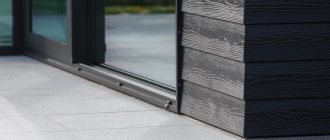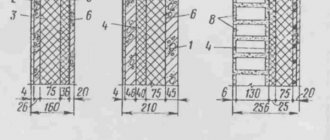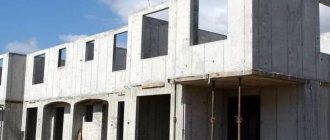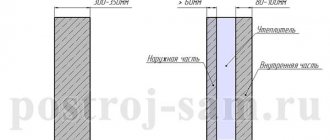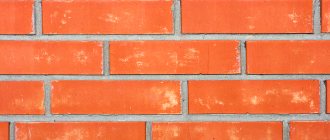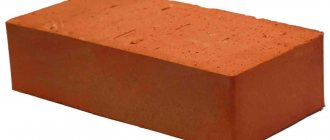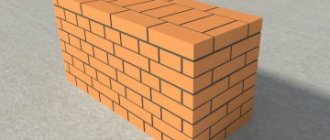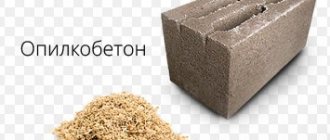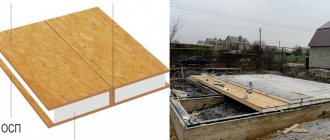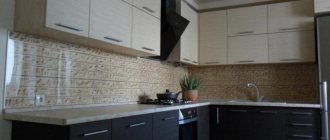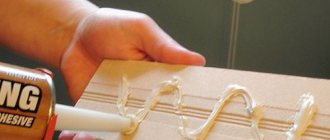No. 1. Production features and advantages
To produce MDF panels, wood chips are used, which are mixed with urea resins . From this homogeneous mass, slabs are formed, which are processed by dry pressing under high temperature and pressure. As a result, a dense slab is formed, which is given the necessary decorative properties at subsequent stages of production.
The rapid spread of the material is dictated by its many advantages:
- beautiful appearance and wide selection;
- ease of installation and maintenance;
- panels can be installed in any direction;
- there is no need to carefully prepare the original surface, because the panels will hide all minor defects in the walls or ceiling;
- Since the panels are mounted on the sheathing, there is space between them and the original surface, which can be used for laying cables or for additional sound insulation.
Wall slabs
The use of MDF for wall decoration is justified by a number of positive qualities of this material. They allow you to level the surface without the use of dry mixtures, which saves apartment owners from lengthy, dirty repairs that consume a lot of time and money.
The installation of the slabs is carried out using special aluminum profiles attached to the walls parallel to the floor. However, this method “eats” about 5 cm of living space on each side of the room, so if the condition of the walls allows it, you can use the adhesive method of fastening. For this purpose, a certain type of glue is used, which, even after hardening, retains its plastic qualities, which prevents deformation and shrinkage of the slabs. In addition, the structure of the glue must be thick enough to fill uneven walls of varying depths.
PVC panels for the kitchen, photos with drawings and other technical data about the building material can be found and seen from this article.
Dimensions and installation for MDF video wall panels:
The advantage of MDF panels compared to wallpaper that is more familiar to most consumers is the following positive qualities:
- moisture resistance : particle boards are not so afraid of high humidity in the room, which is typical for apartments during the rainy demi-season period;
- easy installation : the lathing only needs to be done once, for the initial installation; If the owners want to change the design of the room, then it is enough to dismantle the old panels and install new ones in their place. This will take an order of magnitude less time than the “dancing with a tambourine” that usually accompanies wallpapering;
- fast and affordable room cleaning : it’s no secret that even on vertical surfaces a huge amount of dust accumulates. The good thing about MDF material is that it allows for wet cleaning - this is a definite plus for people prone to respiratory allergic reactions;
- additional soundproofing of the room;
- the ability to place computer and electrical cables behind the panels;
- environmental friendliness : MDF contains much less toxic substances than chipboard and some types of wallpaper (vinyl, non-woven).
MDF material, what it is and what a building material is, can be found out in this article.
The MDF panel has a groove on one side and a special latch on the other, allowing them to be connected like a lock into a continuous surface with barely noticeable seams.
Leroy Merlin PVC panels for the bathroom will fit perfectly into the interior of the room, which you can find out in more detail in this article.
The disadvantages of the material include the fact that psychologically it becomes obsolete faster than it wears out. In this regard, they are more often used for cladding non-residential premises that are not so often seen - corridors, loggias, bathrooms, kitchens, as well as offices. A plastic corner is used as a “plug” masking the end of the decorative part, the length of which ranges from 1300 to 3600 mm, and the width of the strips is about 56 mm. The size of the HDF sheet also varies within these limits. The color of the corner is selected to match the color of the panel in such a way as to fully match it, but if the design idea requires it, it can, on the contrary, contrast with the general background.
What is the standard type and size
According to their appearance and parameters, wall panels are classified into slats, tiles and sheets. The first resemble long narrow slats, which, after installation is completed, resemble wooden boards attached to the walls, painted in different colors.
You can see what wall panels for a bathroom in Leroy Merlin look like in this article.
The texture of the second is similar to tiles laid in even rows, while the third is sheets with a smooth surface. They have the same technical characteristics, but the difference in shape allows you to visually expand or narrow the room, emphasize the texture of the walls or, conversely, make them inconspicuous. What should the dimensions be? The size of the panels may also depend on the manufacturer.
| Manufacturer | Size, mm | Thickness, mm |
| Kronospan | 2600×200 | 7 or 14 |
| 2600×325 | 9 | |
| 2600×153 | 7 or 8 | |
| HDM | 1300×158 | 6 |
| 2600×198 | 6 | |
| Union | 2600×238 | 7 |
| ProfiLine | 2600×238 | 7 |
| Grenagloss | 2750×1300 | 17 |
| 2800×1300 | 10 | |
| 2440×1220 | 19 | |
| Eco Forest | 2800×2070 | 3, 5, 6, 8, 10, 12, 16, 18, 19, 22, 25, 28, 30, 38. |
When choosing the appropriate size, you should take into account the total area of the room and the pattern of the panel: it should end harmoniously at the floor and ceiling and not cause a feeling of raggedness.
No. 2. How is MDF better than chipboard?
MDF boards are often compared to products made from chipboard: they are made from wood chips, and they look very similar. The difference lies in the type of binder used for the chips: in the production of MDF, higher quality materials are used, so the boards are more durable and safe.
The main advantages of MDF boards compared to chipboards:
- health safety . Phenol-formaldehyde resins are used as a binder in chipboard. The material can ultimately emit formaldehyde, which, even in small quantities, causes serious harm to human health. That is why Europe has long abandoned the production of chipboards. MDF panels are completely harmless to health, so they are used even in children's rooms;
- protection from moisture. Chipboards are coated with a water-repellent composition, but the protective properties do not last long, after which the boards may swell under the influence of moisture. MDF panels are much more resistant to moisture.
However, it is worth noting that MDF panels are more sensitive to high temperatures than chipboard, and their main disadvantage is a high fire hazard.
Range of models
Finishers demand one thing, furniture makers another. You don’t have to go through the hassle of searching for both. They receive everything from manufacturers according to orders and needs. Currently, the length of the panels ranges from 2.4 to 2.7 m, the width varies from 150 to 900 mm, and the thickness varies from 3 to 30 mm.
All the variety is well presented in numerous photos in thematic reviews or in catalogs of manufacturers and sellers.
In addition, a special type is produced - veneered panels, their thickness reaches 60 mm. It can be thicker - upon individual order.
Wood fiber is an excellent heat and sound insulating material. MDF panels with a thickness of 12 mm provide the same noise protection as 15 cm brickwork. Their appearance improves interior decor.
As for the entire range, you need to look directly at the suppliers. As an example, we give descriptions from 3 popular manufacturers.
The Kronospan brand offers panels in the following sizes:
- 2600 x 200 mm with a thickness of 14 mm;
- 2600 x 325 mm 9 mm thick;
- 2600 x 153 mm 8 mm thick;
- 2600 x 200 mm 7 mm thick;
- 2600 x 153 mm, 7 mm thick.
MDF panels from the HDM brand:
- 1300 x 198 mm 6 mm thick;
- 2600 x 198 mm, 6 mm thick.
The Russian trademark “Soyuz” is represented by panels 2600 x 238 mm with a thickness of 7 mm.
Many companies offer customization to customers. The secret is that the technology of crimping the fiber and saturating it with resins allows this to be done on machines. The customer will not only receive the required linear dimensions, but also a shape taking into account the surface topography for which the panels are made. This is the advantage of MDF panels over other facing materials.
Assembly and adjustment of the panels is not difficult. Minimum construction waste. The only drawback is flammability, so fire safety measures must be observed. But in the future, materials with high resistance to open fire are expected to enter the market. Manufacturers are working to solve this problem. That is why MDF retains its leading position among finishing materials.
No. 3. Types of MDF panels depending on production method
Although the principle of production of MDF panels remains general, some nuances can be used that affect some of the properties of the material. Depending on the technological features of production, the following types of panels are distinguished:
- whole pressed. The most common and widespread option. The wood pulp is pressed under high temperature and pressure, resulting in a slab with smooth surfaces;
- laminated. They are produced in exactly the same way as solid-pressed ones, but with one difference - at the final stage, the front panel is covered with a thin polymer film, which becomes additional protection from moisture and mechanical damage. The film can be of absolutely any color;
- moisture resistant. For this type of slabs, the highest quality wood is used. Sawdust together with the binder can be processed at high temperatures for a longer period of time, resulting in more durable and resistant to negative influences slabs. They can be used for cladding bathrooms and balconies.
Tips from the pros
When choosing this finishing product, experts advise paying attention to the following nuances that will help you independently determine the quality of the chosen product:
- Initially, it is necessary to inspect the surface of the product. In ideal condition, it should have a polished surface without flaws. There should be no gaps in the stiffeners located inside the material.
- Connect several elements, and the connection should be made easily and without creating seams. High-quality products are assembled without much difficulty.
- When you press the lamella, cracks and dents should not form. Pay special attention to wall products, which according to the norm should be characterized by a high strength index.
- You should also check the plastic material for bending. If the product does not crack or break when bent, then the product is considered high quality.
- If you do not have experience working with plastic products, it is better to purchase expensive products. In this case, working with such products will be more simplified. When working with cheap products, there is a risk of moisture getting inside the entire structure, which will lead to further deformation of the products.
- Plastic panels are installed perpendicular to the direction of the frame slats.
- If you use panels with a pattern or pattern, then installation should begin from the left corner to the right.
- A gap of 5 mm must be left between the finishing elements. This is necessary so that when the temperature in the room increases, the plastic may change in size.
- When finishing walls in rooms where high humidity prevails (bathroom, toilet), ventilation holes should be installed, otherwise moisture will accumulate under the structure, leading to the appearance of mold and mildew.
No. 4. MDF panels according to the method of designing the front part
To give the material an attractive appearance, the front part is decorated in one of the following ways:
- veneering _ It allows you to achieve a chic appearance that completely imitates natural wood, although it is difficult to call it an imitation, because a thin layer of real wood, the thickness of which is no more than 3 mm, is used to cover the panel. This is quite enough to convey the original texture and color of the wood;
- lamination with a polymer film that can convey any design: abstract patterns, the structure of wood, stone, etc.;
- coloring. A layer of paint is applied to the rough surface of the panel, which acquires a certain shade and a matte or glossy surface depending on the type of paint.
The choice of a particular option depends on personal preferences and the design features of the room.
Depending on the characteristics of the front surface, MDF panels are also divided into:
- flat;
- embossed.
Ceiling
The requirements for slabs used for ceiling decoration are somewhat higher than for wall slabs - they must be light and easy to attach. They have medium density and a variety of textures, allowing you to mount both a classic matte snow-white ceiling and realize a wide variety of design ideas.
You can find out how to use wall panels in the bathroom here in the article.
For this, it is more advisable to use MDF slatted panels, which in appearance resemble lining. Their length is usually 2400-3600 mm in length and 148-300 mm in width, and installation is carried out in the same way as installing wall plates - using liquid nails, aluminum sheathing or a construction stapler. You can fasten the slatted panels yourself, without involving outside help, which cannot be said about sheet or tile MDF, the large sizes of which require at least two pairs of hands. The material is adjusted to the required length using a jigsaw or a circular saw, while it does not generate much dust and does not form knots.
You can see what the wall panels look like in the hallway here in this article.
No. 5. MDF panel size
Each manufacturer produces MDF panels with the parameters it considers necessary; no unified requirements yet exist. The length and width of the panels varies widely; the thickness, as a rule, is 5-25 mm.
Depending on the shape and size of the panels, they are usually divided into:
- rack typesetting . These are long boards 11-29 cm wide and 2-4 m long. They can be useful when finishing spacious rooms in attempts to imitate natural wood cladding;
- typesetting panels . These are square tiles with a side of 29-95 cm. You can use tiles of the same color and texture, you can combine different ones - in any case, you will be able to achieve an interesting decorative effect;
- sheet panels . The dimensions of such sheets are from 1.2 to 2.5 m. They are often used for tiling large bathrooms.
How to calculate the required quantity?
Before you start calculating the required amount of building material, you need to know the perimeter of the working surface on which PVC panels will be mounted in the future. Afterwards, from the total perimeter you need to calculate the area of the existing openings, then the resulting difference must be divided by the perimeter of one finishing product.
Let's consider an example where the external cladding of the walls of a one-story building with an area of 6x8 meters and a height of 2.5 meters will be carried out with PVC slats. This room has 4 window openings and 1 door. In this case, polyvinyl chloride panels with parameters of 2.5 mx30 cm will be used.
Total perimeter of the wall surface: (6 6 8 x2.5=70 m2.
x2.5=70 m2.
Let's calculate the difference between the total area of the building and the openings of the room: 70-10.62=59.38 m2.
Area of 1 PVC product: 2.5x0.3=0.75 m2.
Let's calculate the required number of panels for work: 59.38/0.75=79.17 pcs.
The resulting number must be rounded up. As a result, 80 pieces of polyvinyl chloride panels will be required to cover a one-story building.
No. 6. The best manufacturers of MDF panels
SWISS KRONO GROUP
Once upon a time in 1897, it was a small sawmill located in Austria. Today, the group of companies includes a lot of factories located around the world , its products are in demand all over the world, and the company’s name has become a kind of quality mark. A company plant was also opened in Russia in 2002 , which today is well known as Kronostar. This enterprise is today considered the country's largest manufacturer of wood-based panels.
In the country, MDF boards from Kronostar are very popular, because their quality is European and their prices are domestic. The company offers a huge selection of such panels; they have a lot of advantages; they are used for cladding walls and, if desired, ceilings; they can be laid horizontally, vertically or at an angle.
P&M Kaindl
This Austrian company with more than a century of history is today considered the world leader in the production of MDF panels. They use only the highest quality raw materials, modern high-tech equipment and constantly introduce innovations, as a result of which the products constantly receive prestigious awards. The company specializes in the production of laminate and MDF panels, each time striking with new developments. Products are exported all over the world and are also represented in Russia.
Sonae Industry
The Portuguese company , whose factories are today located in 12 countries around the world, is not far behind the giant in terms of sales The company has existed since 1959, first producing plastic products, then producing chipboard, and since 1990 it has been producing MDF panels. Today the company is one of the world's three largest manufacturers of MDF panels. Such high results were achieved thanks to a strict approach to quality control, constant improvement of technology and expansion of the range.
KASTAMONU
The company has been operating since 1969 and today combines production facilities in Turkey, Romania, Bosnia and Herzegovina , and recently a plant was opened in Russia , so the company’s products are actively entering the domestic market and have a fairly low price. High production turnover allowed the company to enter the top five woodworking companies in Europe. The company's factories use modern technology, and new technologies are constantly being introduced. The company's assortment includes MDF panels with a wide variety of coatings and different sizes, and there are so many decor options that everyone will definitely find an option for themselves.
CJSC "Plitspichprom"
A large domestic enterprise, which includes several factories. The production of MDF panels is carried out by JSC Lesplitinvest, which uses the best and most advanced European technologies, adapted to domestic operating conditions. Today, 35 types of different panels are produced here, and equipment from Italian, German and Swiss production is used. The assortment includes veneered, painted and laminated panels; there are a lot of design options. Prices vary: there are both budget options and quite expensive ones.
"Zheshart plywood mill"
The company has been operating since 1946, and today is one of the main domestic manufacturers of MDF boards. The products are used not only in Russia, but are also actively exported to neighboring countries. Modern equipment is used, new advanced technologies are constantly being introduced, and production volumes are increasing.
LLC "Master and K"
This group of companies has been the flagship in the domestic market for the production of MDF panels for several years in a row. The manufacturer appeared in 1995, began with the production of chipboards, and today its range is very extensive and also includes MDF panels. They are presented in several collections, which are constantly updated and replenished with new types, so the buyer will certainly be able to find an option with the necessary technical characteristics and design.
"Latat"
Another responsible manufacturer of MDF boards with a full production cycle. The company carries out its own logging, produces low-toxic resins used as a binder, and produces boards using modern German equipment. The company's specialists control all stages of production, which allows us to achieve high quality products.
